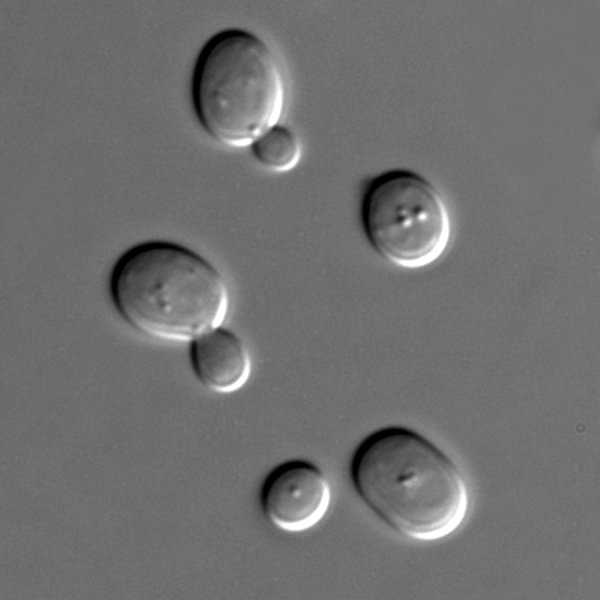Following an exhaustive, ten-year effort, scientists at the Buck Institute for Research on Aging and the University of Washington have identified 238 genes that, when removed, increase the replicative lifespan of S. cerevisiae yeast cells. This is the first time 189 of these genes have been linked to aging. These results provide new genomic targets that could eventually be used to improve human health. The research was published online on October 8th in the journal Cell Metabolism.
"This study looks at aging in the context of the whole genome and gives us a more complete picture of what aging is," said Brian Kennedy, PhD, lead author and the Buck Institute's president and CEO. "It also sets up a framework to define the entire network that influences aging in this organism."
The Kennedy lab collaborated closely with Matt Kaeberlein, PhD, a professor in the Department of Pathology at the University of Washington, and his team. The two groups began the painstaking process of examining 4,698 yeast strains, each with a single gene deletion. To determine which strains yielded increased lifespan, the researchers counted yeast cells, logging how many daughter cells a mother produced before it stopped dividing.
"We had a small needle attached to a microscope, and we used that needle to tease out the daughter cells away from the mother every time it divided and then count how many times the mother cells divides," said Dr. Kennedy. "We had several microscopes running all the time."
These efforts produced a wealth of information about how different genes, and their associated pathways, modulate aging in yeast. Deleting a gene called LOS1 produced particularly stunning results. LOS1 helps relocate transfer RNA (tRNA), which bring amino acids to ribosomes to build proteins. LOS1 is influenced by mTOR, a genetic master switch long associated with caloric restriction and increased lifespan. In turn, LOS1 influences Gcn4, a gene that helps govern DNA damage control.
"Calorie restriction has been known to extend lifespan for a long time." said Dr. Kennedy. "The DNA damage response is linked to aging as well. LOS1 may be connecting these different processes."
A number of the age-extending genes the team identified are also found in C. elegansroundworms, indicating these mechanisms are conserved in higher organisms. In fact, many of the anti-aging pathways associated with yeast genes are maintained all the way to humans.
The research produced another positive result: exposing emerging scientists to advanced lab techniques, many for the first time.
"This project has been a great way to get new researchers into the field," said Dr. Kennedy. "We did a lot of the work by recruiting undergraduates, teaching them how to do experiments and how dedicated you have to be to get results. After a year of dissecting yeast cells, we move them into other projects."
Though quite extensive, this research is only part of a larger process to map the relationships between all the gene pathways that govern aging, illuminating this critical process in yeast, worms and mammals. The researchers hope that, ultimately, these efforts will produce new therapies.
"Almost half of the genes we found that affect aging are conserved in mammals," said Dr. Kennedy. "In theory, any of these factors could be therapeutic targets to extend healthspan. What we have to do now is figure out which ones are amenable to targeting."
Other Buck Institute researchers involved in the study include: Mark A. McCormick (first co-author), Mitsuhiro Tsuchiya, Scott Tsuchiyama, Arianna Anies, Juniper K. Pennypacker, Shiena Enerio, Dan Lockshon, Brett Robinson, Ariana A. Rodriguez, Marc K. Ting, and Rachel B. Brem. A full list of authors is included in the paper.
This research was supported by NIH grants R01AG043080, R01AG025549, R01AG039390 and P30AG013280, as well as NIH training grants T32AG000266, T32AG000057 and T32ES007032 and the Ellison Medical Foundation.
Source: Buck Institute for Research on Aging. "Mapping the genes that increase lifespan: Comprehensive study finds 238 genes that affect aging in yeast cells." ScienceDaily. ScienceDaily, 8 October 2015. http://www.sciencedaily.com/releases/2015/10/151008142230.htm


